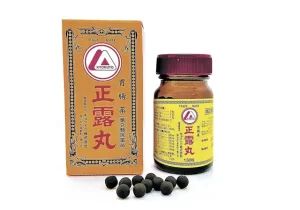FDA latest recommendation: ctDNA liquid biopsy still needs to be improved
- Gut Bacteria Enzymes Offer Hope for ABO Universal Blood Transfusions
- Well-Known Japanese Medicine Exposed for 30 Years of Data Falsification
- Oregon Reverses Course: From Decriminalization to Recriminalization of Drug Possession
- Why Lecanemab’s Adoption Faces an Uphill Battle in US?
- Yogurt and High LDL Cholesterol: Can You Still Enjoy It?
- WHO Releases Global Influenza Vaccine Market Study in 2024
FDA latest recommendation: ctDNA liquid biopsy still needs to be improved
FDA latest recommendation: ctDNA liquid biopsy still needs to be improved. ctDNA liquid biopsy is currently a hotspot in precision oncology application research. It mainly detects cancer diseases by detecting free circulating tumor cells (CTCs) or circulating tumor DNA fragments (ctDNA) in the blood.
The principle is that when tumor cells undergo apoptosis or necrosis, they release DNA fragments into the blood circulatory system. These DNA fragments often contain tumor somatic mutations, and their abundance is closely related to the size and stage of the tumor.
Compared with traditional tumor tissue biopsy technology, ctDNA liquid biopsy has more advantages, such as fast sampling speed, low price, minimal invasiveness, and the ability to track a series of tumor development and changes. More importantly, tumor tissue biopsy cannot be performed without knowing that it is a tumor in advance, while ctDNA liquid biopsy has the ability to identify unknown lesions. It can also detect micro residual disease (MRD) to detect tumor treatment. Cancer screening can even be carried out in healthy people.
Recently, a joint team led by the US FDA, the research group of the University of Arkansas Medical Sciences, the US National Toxicology Research Center, the SEQC2 Oncopanel Sequencing Working Group and other research groups published a title of Evaluating the analytical validity in the sub-Journal Nature Biotechnology. of circulating tumor DNA sequencing assays for precision oncology.
As mentioned in the article, with the rapid development of ctDNA liquid biopsy, this technology is also facing major challenges. Therefore, the research team has established a cross-platform and multi-laboratory technology platform to improve the effectiveness of ctDNA liquid biopsy technology. A comprehensive evaluation was carried out and constructive improvement suggestions were put forward for the future development of the technology.
The study mentioned that although ctDNA liquid biopsy is rapidly being used in precision oncology, its shortcomings need more attention. For example, liquid biopsy requires the detection of cell-free DNA for diagnosis, but if the free DNA fragments are too small, it will pose a higher challenge to the detection of somatic mutations, and its accuracy may be greatly compromised. In addition, ctDNA detection is also affected by a large number of experimental variables, which may cause sequencing errors. For example, small free DNA fragments will inhibit targeted enrichment and affect the analysis of complex sites or mutations.
As a result, the research team used simulation and synthesis control experiments, and added a laboratory capability comparison verification of artificial human ctDNA as a reference substance to measure the impact of each step variable in the ctDNA sequencing workflow. They first determined the factors that would cause deviations in ctDNA detection by operating a simulation test and a synthesis test respectively. In the simulation experiment, the researchers established a simulation library containing 155 cancer genes. The results showed that when ctDNA detects shorter DNA fragment depths, its sensitivity to detect mutations is reduced, which will hinder significant genes such as RAS. The detection effect of gene family, which shows that even without the influence of test variables, the genome itself will have a great influence on the effect of ctDNA detection.
In the synthetic control experiment, the researchers used synthetic DNA called “sequins” to evaluate the effectiveness of ctDNA in detecting mutations. “Sequin” is a synthetic DNA sequence that can mimic human natural genes and mutations. The results show that the frequency of tumor gene mutation has more influence on ctDNA detection than the type of mutation. At the same time, tumor heterogeneity is also one of the important influencing factors. The sensitivity of ctDNA detection is in the marginal region of exons, regions with high/low GC content, and low sequence. The complex area has been significantly reduced. These conclusions also show that it is difficult to accurately identify changes in the abundance of low-frequency ctDNA mutations during patient treatment.
Next, the research team brought together Roche, Imena, IDT, Burning Rock Medicine, and Thermo Fisher Scientific, five companies with leading technologies in the ctDNA field, to conduct tests and evaluations on their liquid biopsy products. The researchers first extracted genomic DNA of the same abundance from ten different human cancer cell lines, pooled them together to create a simulated cancer sample, and sent them to the United States, the United Kingdom, China, and Australia. Tests and evaluations are carried out in 12 clinical research institutions. Each ctDNA test will be carried out in 2-3 independent laboratories, each laboratory will generate 4 technical copies for each test sample, and each sequencing sample will be analyzed by the relevant ctDNA test product supplier, and finally a total of 360 times of ctDNA detection and analysis were performed.
In this assessment, the researchers conducted rigorous analysis and research on multiple indicators such as the coverage depth and heterogeneity, sensitivity, accuracy, repeatability, free DNA input and the impact of blood draw of ctDNA liquid biopsy.
Combining the final sequencing results and comparative analysis of each product, the researchers found that:
1. All participating liquid biopsy products can detect mutations of more than 0.5% variant allele frequency (VAF) with extremely high sensitivity, accuracy and repeatability, but when VAF is less than 0.5%, its mutation The detection becomes no longer reliable, and the sensitivity detection for ctDNA mutations below 0.5% VAF will become one of the main challenges in liquid biopsy;
2. The amount of free DNA input is a key variable. As the amount of input increases, the depth, sensitivity and repeatability of detecting fragments are improved;
3. The characteristics of a ctDNA detection method determine its potential applicability in research and clinical oncology, which means that different detection methods are suitable for different detection targets. For example, if the abundance of ctDNA fragments in the blood circulation decreases, products with high sensitivity and accuracy will be more suitable for molecular characterization analysis for detecting early and late tumors;
4. The use of ctDNA sequencing technology to detect and monitor postoperative micro residual disease (MRD) will become a very potential application. However, this application needs to have high sensitivity for the detection of VAF at 0.1%-0.01%, so that it can be reliable Predict the probability of disease recurrence.
Summary:
The conclusion of this study is that at present, improving the detection of VAF mutations below 0.5% will become the top priority of ctDNA liquid biopsy. Hope this technology can break through this limitation in the future and bring more gospel to cancer patients!
(source:internet, reference only)
Disclaimer of medicaltrend.org
Important Note: The information provided is for informational purposes only and should not be considered as medical advice.



